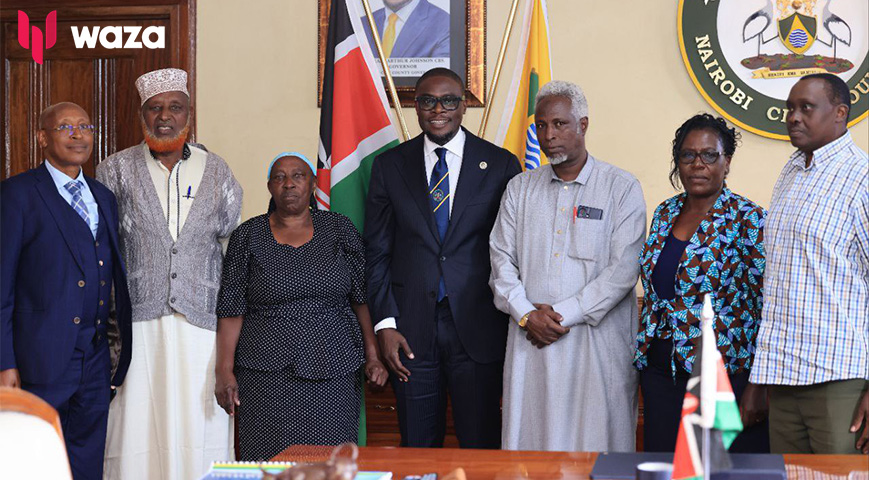In response to some Kenyans' criticism directed at Governor Johnson Sakaja, the Nairobi County government relocated squatters on the contested Kariobangi sewer land.
When Sakaja announced the resettlement on Tuesday, he posted pictures of himself with the leaders of the Kariobangi Sewerage Farmers Self Help Group, who are the leaders of thousands of settlers who were forced to leave their homes during the height of the Covid-19 pandemic.
"Met the leadership of Kariobangi Sewerage Farmers Self Help Group representing thousands of residents who were forcibly and inhumanely evicted from their homes during the height of the COVID pandemic in 2020. Today the County Executive Committee of Nairobi has approved their resettlement on the land as promised to them. May justice prevail," Sakaja announced.
Met the leadership of Kariobangi Sewerage Farmers Self Help Group representing thousands of residents who were forcibly and inhumanely evicted from their homes during the height of the COVID pandemic in 2020.
Today the County Executive Committee of Nairobi has approved their… pic.twitter.com/u6FsC0kPjP— Sakaja Arthur Johnson (@SakajaJohnson) January 16, 2024Did you read this?
When government bulldozers entered the settlers' homes on the disputed land and tore them down, the settlers were left to spend chilly nights outside in Nairobi during torrential downpours.
The demolitions under President Uhuru Kenyatta's administration were widely condemned despite the residents' contention that the government had disregarded a court order halting the eviction.
Many were left without notice and without the opportunity to recover some of their belongings due to the evictions.
The government then defended itself, claiming that the evictions were required to relieve pressure on the Ruai and Njiru sewer plants and make room for the expansion of Nairobi County's sewerage treatment and management system.
However, Governor Sakaja's most recent action has drawn criticism, with some claiming it is an attempt to appropriate public land covertly.
Activist Boniface Mwangi is among those who are against the settlers' resettlement. According to Mwangi, the governor transfers public land to private entities through coercion.

Other Kenyans expressed similar opinions and predicted that the city would eventually become overrun with sewage waste due to the lack of treatment facilities to accommodate the expanding population.









